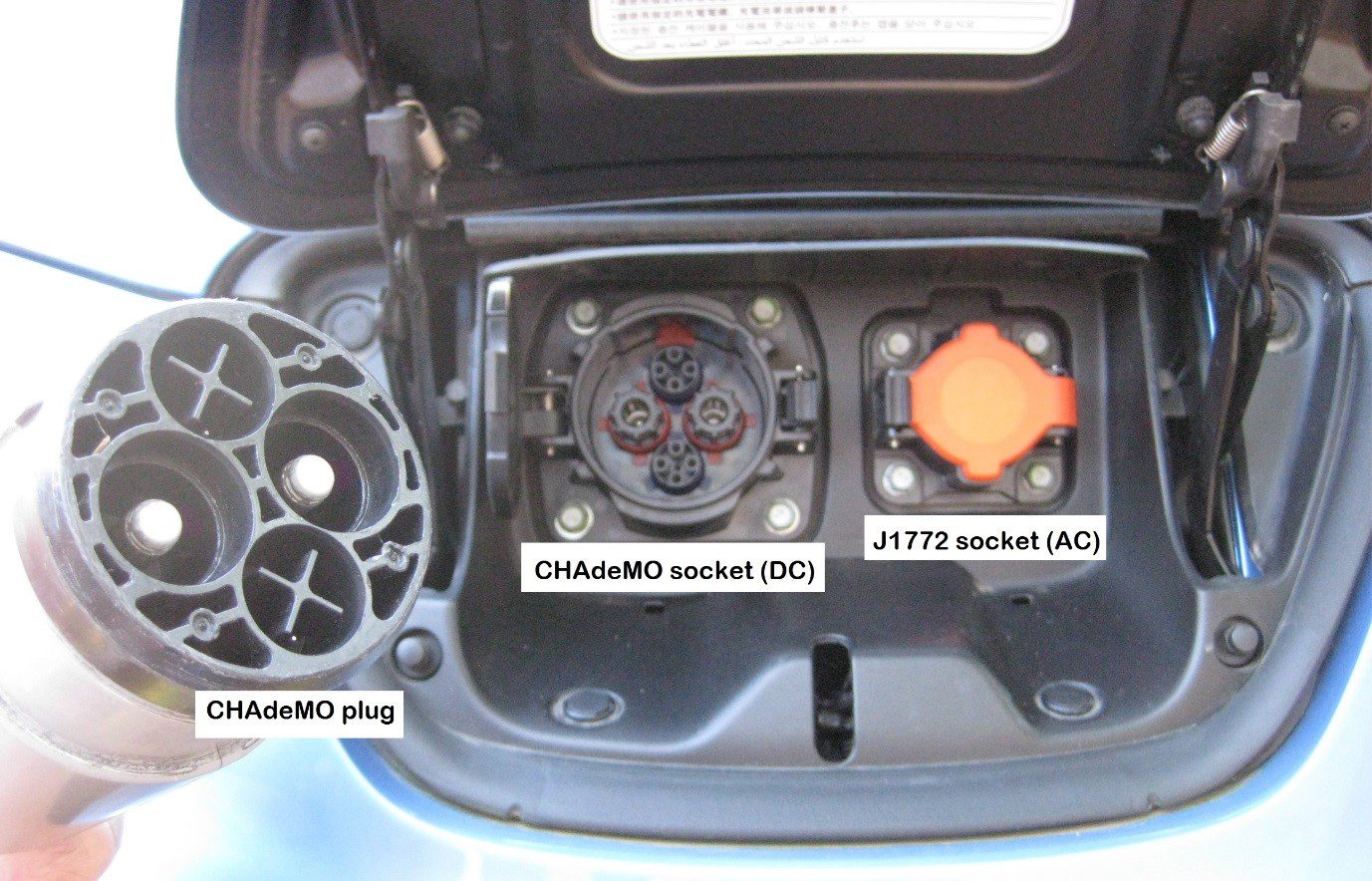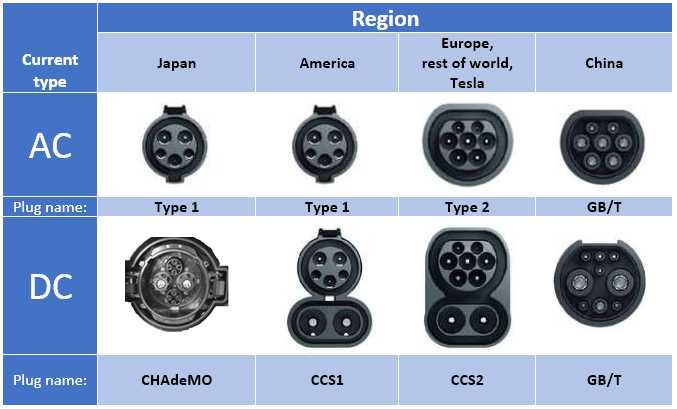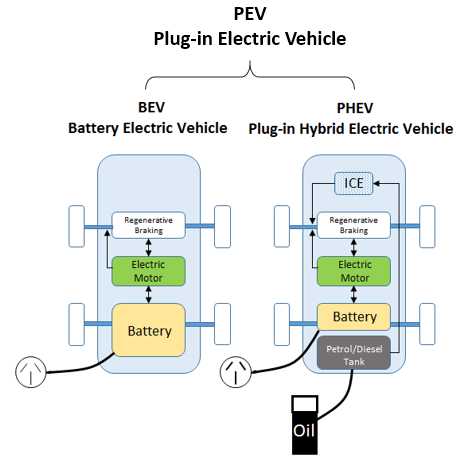Common electric vehicle terms are defined on this page, scroll down or use the links below to navigate directly to terms you are interested in.
- AC charging
- BEV
- Bi-directional charging
- CCS
- CHAdeMO
- Charging port
- DC charging
- Efficiency
- EVSE
- FCEV
- HEV
- ICE
- kW
- kWh
- NEDC
- One pedal driving
- PEV
- PHEV
- Plugshare
- Range
- Real-world driving range
- Regenerative braking
- Type 1 AC charging system
- Type 2 AC charging system
- US EPA
- V2G
- V2H
- V2L
- V2X
- Wallbox
- WLTP
AC charging
The most common form of home charging that uses standard power outlets and/or dedicated EV charging equipment. Ideal for using when there is no need to recharge immediately. Charging speeds vary from around 2 kW using a standard power outlet, to 7 kW on a single-phase wallbox and up to 22 kW with a three-phase wallbox and capable electric vehicle.
BEV
Battery Electric Vehicle.

Bi-directional charging
Bi-directional charging is the ability for an electric vehicle to output power from its high-voltage battery pack. This can be in the form of vehicle to load (V2L), vehicle to home (V2H) or vehicle to grid (V2G). Typical power output from vehicles ranges from 1 – 3.5 kW for V2L and up to 10 kW for V2H or V2H.
CCS
The Combined Charging System (CCS) is the standard way to rapid charge electric vehicles.
Except for the Nissan Leaf, Australian EVs have adopted the CCS2 port, which is a combination of a Type 2 AC socket with 2 DC charging pins below.

CCS1 is a combination of a Type 1 AC socket and 2 DC charging pins below.

CHAdeMO
An early DC charging system that has been superseded by the CCS DC charging system. Found on Nissan Leaf EVs.

Charging port
Specialised plugs and sockets used to charge an EV at high currents for extended periods. Various types of charging ports are shown below.

DC charging
High power, fast charging found at some public charging stations. DC charging stations can provide anywhere between 25 kW up to 350 kW, enabling 10-80 % charging in as little as 18 minutes for capable electric vehicles.
Efficiency
Electric vehicle efficiency refers to how much energy they consume to travel a certain distance. The most commonly used units are kWh / 100 km or Wh / km. For example, a particular electric vehicle might use 15 kWh / 100 km, equivalent to 150 Wh / km.
Efficiency can also be used to calculate maximum range with a full charge. For example, the same vehicle using 15 kWh / 100 km fitted with a 60 kWh (usable) battery could travel up to 400 km if you used the entire battery which is not recommended.
EVSE
Electric Vehicle Supply Equipment. Fixed or portable charging equipment that incorporates electronic signalling and allows charging to start.

FCEV
Sometimes called a hydrogen car, FCEV’s, or Fuel Cell Electric Vehicles, combine an electric motor, battery, hydrogen storage tank and fuel cell.
Currently, FCEVs do not include a recharging plug and must be filled at specialised hydrogen refuelling stations.

HEV
Sometimes called a mild hybrid, HEV’s, or Hybrid Electric Vehicles, combine an ICE with an electric motor and battery.
HEVs do not have a recharging plug and battery recharging is done either through regenerative braking or directly from the ICE.

ICE
Internal Combustion Engine – vehicles fuelled by petrol, diesel, liquefied petroleum gas (LPG) or in rare cases liquid hydrogen.
kW
Instantaneous measure of power. The output power of an EV motor is measured in kW, kilowatts.
kWh
A measure of energy stored or used. Total battery capacity is measured in kWh, kilowatt hours.
kWh are also used to measure household electricity use, which means it’s a common unit for both cars and houses and makes it easy to calculate the cost of recharging an EV:
- Cost to charge = % of the battery needing to be recharged X battery capacity X electricity kWh cost.
- For example, an electric Kona with a battery capacity of 64 kWh that is only 50% charged will cost $9.60 to charge to 100% if the cost of electricity is 30c/kWh (0.5 X 64 X $0.30 = $9.60).
NEDC
New European Driving Cycle. A driving cycle originally designed for petrol cars to assess the emission levels and fuel economy of a car’s engine, and now used to assess the driving range of EVs and hybrids.
For EVs, NEDC ratings are often around 30% higher than what can be achieved under real-world driving conditions. For this reason, the acronym is sometimes jokingly referred to as Not Even Damn Close.
One pedal driving
A form of regenerative braking that includes bringing the vehicle to a full stop without requiring the brake pedal. The brake pedal may still be used to brake quickly if necessary.
PEV
Plug-in Electric Vehicle. A general term for EVs that have a recharging plug. Includes both BEV and PHEV.

PHEV
Plug-in Hybrid Electric Vehicle. Combines an ICE with an electric motor, battery and charging plug.

Plugshare
The most commonly used App or website, used by EV drivers around the world to find the nearest charging point.
Plugshare is a free, community-based service that enables registered users to upload new sites, comments, photos and details about charging points. Easily configured to show your choice of charging point type and/or provider.
Visit plugshare.com to get started.
Range
The distance that an EV can travel on a full battery.
Full battery range is measured using one of three common (but differing) standards: NEDC, WLTP, and US EPA, which often differ from real-world driving range.
Real-world driving range
The actual driving range that can be achieved by an EV. It often differs from the range calculated by measuring systems like NEDC, WLTP or US EPA.
Real-world range depends on many factors including driving style (gentle vs heavy acceleration), driving conditions (hilly vs flat), type of driving (city vs country), climate (hot vs cold, windy or still) and vehicle weight (single driver vs fully loaded with passengers and gear).
Regenerative braking
Also called regen. When light or medium braking is used in battery powered electric vehicle, the motor is used to slow the car down, which regenerates electricity and recharges the battery. In some EVs, regenerative braking starts to take effect once the accelerator pedal is released.
In mild hybrid EVs such as the Toyota Camry or Honda Insight, this is the only form of battery charging.
Type 1 AC charging system
An early charging plug and socket system used on older EVs, including the Nissan Leaf, Mitsubishi iMiEV, etc but now only used in North America and Japan. In most of the rest of the world it has been replaced with the Type 2 charging port.
Type 1 is a single phase (5 pin) design which allows up to 7kW charging.
Type 2 AC charging system
This is the current charging plug and socket system used on all new EVs sold in Australia.
Type 2 is a 7 pin design which allows up to 22kW charging and is able to accept both single and three phase AC input.
US EPA
A testing system developed by the United States Environment Protection Agency to calculate the range of a battery EV.
The US EPA test cycle increasingly includes driving in a range of outer suburban and regional areas, making it a more accurate estimation of an EV’s range.
The US EPA ranges are roughly the same, or even slightly lower, as what Australian drivers can achieve.
V2G
Vehicle to grid (V2G) is the ability for an electric vehicle to export electricity from its high-voltage battery pack into the main electricity grid, much like excess solar generated by a rooftop solar system. An electric vehicle that supports V2G needs to be paired with a bi-directional charging capable wallbox.
New standards that support the CCS standard were approved in late 2024, allowing vehicle makers and wallbox manufacturers to have their equipment tested and certified for use with V2G and V2H in Australia.
V2H
Vehicle to home (V2H) is more limited than V2G, where electricity from the EV can only be used to power a house. A bi-directional capable wallbox is also needed for V2H.
V2L
Vehicle to load (V2L) is where an electric vehicle can power electrical appliances, either through a power point located somewhere inside the vehicle or via an external V2L adapter plugged into the charge port.
V2X
Vehicle to X (V2X) is a catch-all term for bi-directional charging capabilities, covering V2G, V2H and V2L.
Wallbox
Another name for fixed AC charging equipment, typically installed in the home and some public charging sites such as shopping centres.
WLTP
Worldwide harmonised Light vehicles Test Procedure. This is the current European Union (EU) mandated testing system used to calculate the range of a battery EV.
European drivers tend to drive more in inner city and suburban areas than US and Australian drivers. In Australia, WLTP ranges are often 10% further than what many Australian drivers can actually achieve. WLTP range can still be used as a standard for comparing the range of different electric vehicles.
